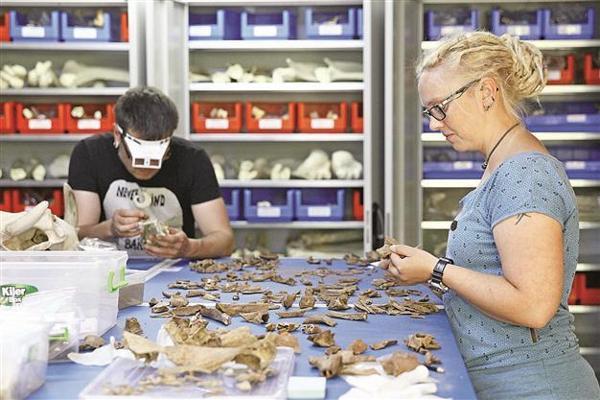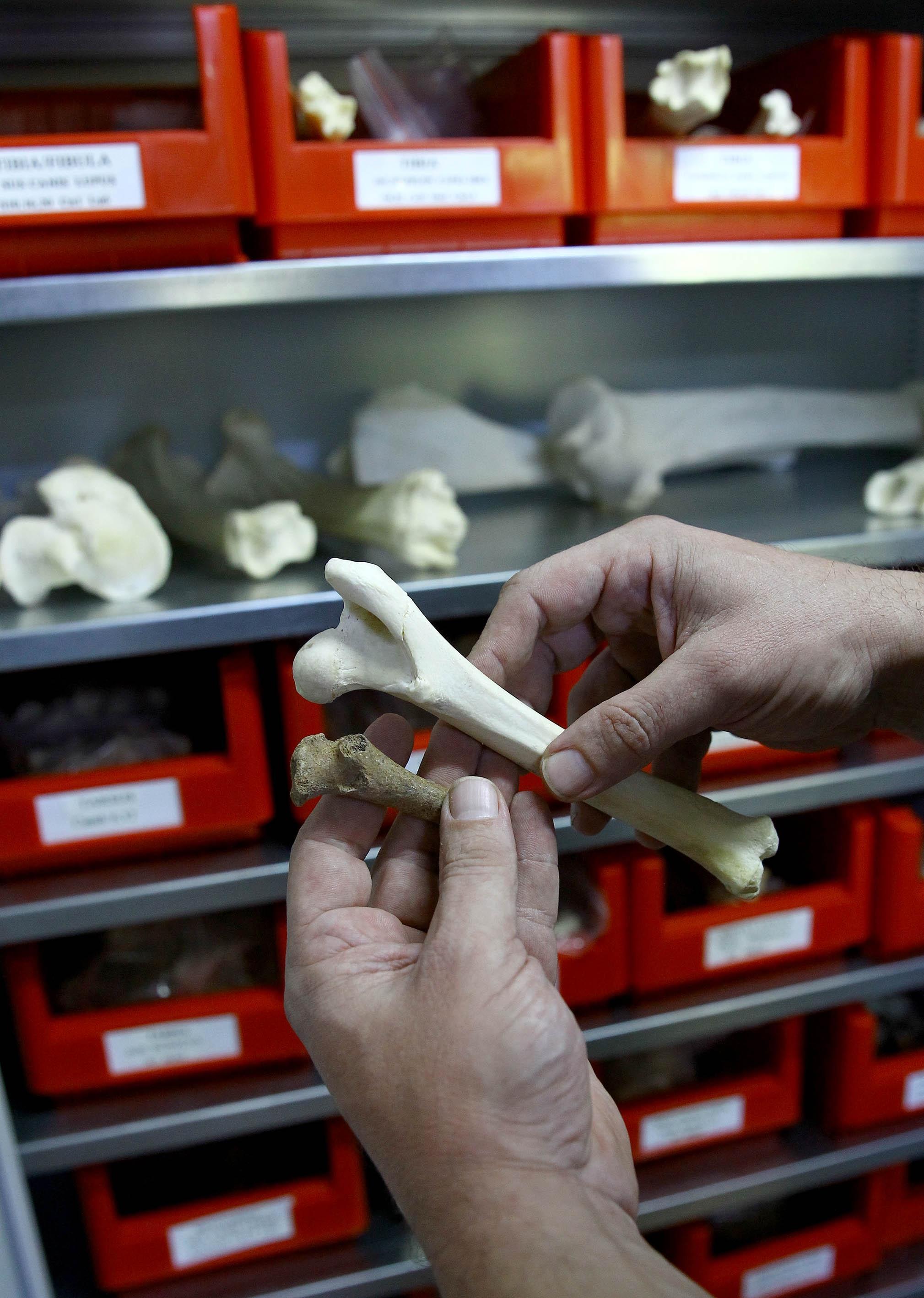Lost species of Anatolia unearthed in Ephesus
İZMİR – Anadolu Agency


AA Photos
Bones unearthed during archaeological excavations at the ancient city of Ephesus in Turkey’s west have newly revealed that species such as leopard and rhino existed in the region.

The bones found during excavations are being examined at the “BoneLab Ephesos” laboratory, located at the excavation house and said to house the world’s largest bone collection. The species, age, and body structure of animals are examined at the recently opened lab, while guest scientists and students are also given a chance to take part in scientific works in the lab.
Alfred Galik of the University of Veterinary Medicine in Vienna said the lab focused on finding how animals were used, treated and hunted in Ephesus in the ancient era.
Galik said they compared the bones obtained during excavations with other samples and tried to find out their species in that way.
“We compare the pieces of sheep, goat, cattle and leopard bones to other samples in order to identify them. We are working here only with the bones found in Ephesus. Some particularly important findings show that the bones were skillfully processed and used,” he added.
Galik said they had found very special bone pieces in the Neolithic Age-era Çukuriçi Mound excavations.
“The bone pieces here fall within the date when animals like sheep, goat and cattle were wild and began to be domesticated for the first time. The bones we found of these animals that are small and even domestic today are very big and heavy. We found sheep, goat and cattle bones in huge sizes. They look wild,” he added.
Galik said the findings also give a clue about people’s lifestyles in the ancient era.
“We have found many animals that no longer exist in this area, species like fallow deer, rhino, leopard and red deer. Animal bones give us clues about people’s lifestyles in ancient ages. For example, the bones found in the Yamaç Evler [Terrace Houses] excavations show that the people who lived there had rich lifestyles and consumed the most expensive meats and seafood. We also found that they kept fish like bass in the pools of their houses,” said Galik.
“We have found many animals that no longer exist in this area, species like fallow deer, rhino, leopard and red deer. Animal bones give us clues about people’s lifestyles in ancient ages. For example, the bones found in the Yamaç Evler [Terrace Houses] excavations show that the people who lived there had rich lifestyles and consumed the most expensive meats and seafood. We also found that they kept fish like bass in the pools of their houses,” said Galik.
“Meat was very expensive in this era. Rich people in the Yamaç Evler consumed young animals and fresh meat, while the bones found in the houses of other people are the bones of old animals. They were cooked for a long time. So these details give us information about the position of people in these ancient societies,” Galik added.
